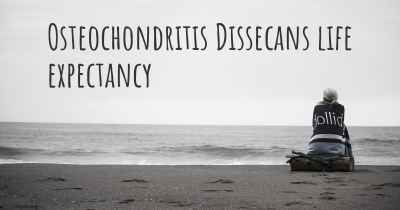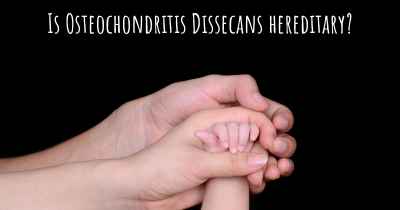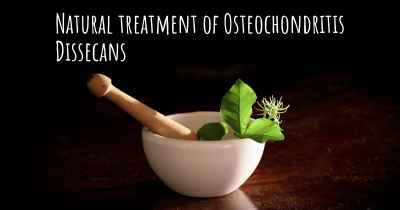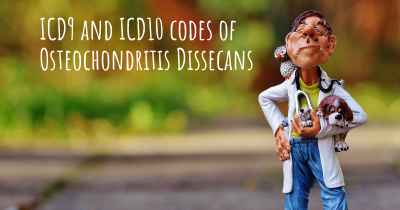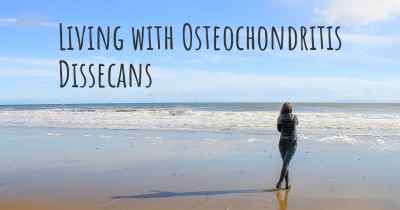What are the best treatments for Osteochondritis Dissecans?
See the best treatments for Osteochondritis Dissecans here

Treatments for Osteochondritis Dissecans
Osteochondritis Dissecans (OCD) is a condition that affects the joints, particularly the knee, ankle, and elbow. It occurs when a small piece of bone and cartilage separates from the joint surface, leading to pain, swelling, and limited joint movement. The exact cause of OCD is not fully understood, but it is believed to be a combination of genetic and environmental factors.
When it comes to treating OCD, the primary goal is to relieve pain, promote healing, and restore normal joint function. The choice of treatment depends on various factors such as the severity of the condition, the affected joint, the patient's age, and their activity level. Here are some of the best treatments for Osteochondritis Dissecans:
1. Non-Surgical Treatments
Non-surgical treatments are typically the first line of defense for mild to moderate cases of OCD. These treatments aim to reduce pain and inflammation, promote healing, and prevent further damage to the joint. They include:
- Rest and Activity Modification: Avoiding activities that worsen symptoms and reducing weight-bearing on the affected joint can help alleviate pain and allow the joint to heal.
- Physical Therapy: A physical therapist can design a customized exercise program to strengthen the muscles around the joint, improve joint stability, and enhance range of motion.
- Bracing: Wearing a brace or cast can provide support to the affected joint, reduce stress on the area, and promote healing.
- Medications: Over-the-counter pain relievers, such as nonsteroidal anti-inflammatory drugs (NSAIDs), can help reduce pain and inflammation. In some cases, corticosteroid injections may be recommended to alleviate severe pain and swelling.
2. Surgical Treatments
If non-surgical treatments fail to provide relief or if the OCD lesion is severe, surgical intervention may be necessary. The type of surgery performed depends on the size, location, and stability of the lesion. Surgical treatments for OCD include:
- Arthroscopy: This minimally invasive procedure involves inserting a small camera and surgical instruments into the joint through small incisions. The surgeon can then remove loose bone and cartilage fragments, smooth the damaged area, and stimulate healing.
- Drilling: In this procedure, the surgeon creates small holes in the affected bone to promote blood flow and stimulate the growth of new cartilage.
- Microfracture: Similar to drilling, microfracture involves creating small fractures in the underlying bone to stimulate the formation of new cartilage. This procedure is often combined with arthroscopy.
- Osteochondral Autograft Transplantation (OATS): This procedure involves transferring healthy cartilage and bone from one part of the joint to the damaged area. It is typically reserved for larger lesions or cases where other treatments have failed.
- Osteochondral Allograft Transplantation: Similar to OATS, this procedure involves transplanting cartilage and bone from a donor to replace the damaged area. It is an option for patients with extensive lesions or those who are not suitable candidates for autografts.
3. Rehabilitation and Follow-up
Regardless of the chosen treatment, rehabilitation plays a crucial role in the recovery process. Physical therapy is often recommended after surgery to restore strength, flexibility, and joint function. The duration and intensity of rehabilitation vary depending on the individual case.
Regular follow-up appointments with the healthcare provider are essential to monitor the progress, assess the healing, and make any necessary adjustments to the treatment plan. It is important to follow all post-operative instructions and adhere to any activity restrictions to optimize the chances of a successful outcome.
In conclusion, the best treatments for Osteochondritis Dissecans depend on the severity of the condition, the affected joint, and the patient's individual circumstances. Non-surgical treatments are often the first approach, including rest, physical therapy, bracing, and medications. If these methods fail or the condition is severe, surgical interventions such as arthroscopy, drilling, microfracture, or transplantation may be necessary. Rehabilitation and follow-up care are crucial components of the treatment process to ensure optimal recovery and long-term joint health.
Posted Sep 13, 2017 by Abhishek 200
